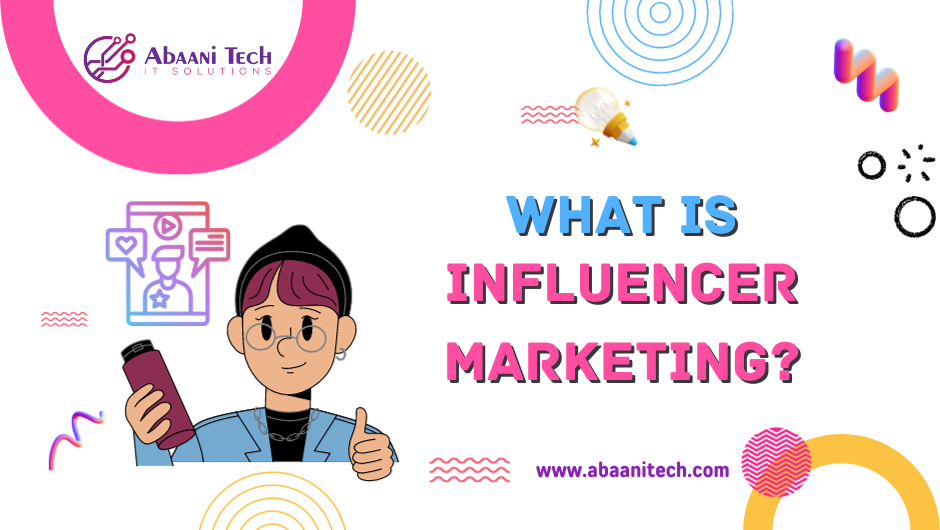Transforming Customer Service with Chatbots


In today’s fast-paced digital world, providing exceptional customer service has become a crucial aspect of maintaining a successful business. With the advancement of technology, one tool that has proven to be invaluable in enhancing customer service is chatbots. These AI-powered virtual assistants have transformed the way businesses interact with their customers, offering real-time support, personalized assistance, and efficient problem-solving.
In this article, we will delve into the world of chatbots and explore how they can be effectively utilized to improve customer service.
- Rise of Chatbots in Customer Service
- Understanding Chatbots and Their Capabilities
- Benefits of Using Chatbots for Customer Service
- Implementing Chatbots: Step-by-Step Guide
- Enhancing Customer Engagement through Personalization
- 24/7 Support: The Power of Round-the-Clock Assistance
- Handling Complex Queries with Ease
- The Human Touch: Balancing Automation and Human Interaction
- Overcoming Challenges and Pitfalls
- Measuring Success: Key Metrics to Evaluate Chatbot Performance
- Future Trends in Chatbot Technology
- Conclusion: Revolutionizing Customer Service with Chatbots
- FAQs
Rise of Chatbots in Customer Service
In an era where customers seek quick and effective solutions to their queries, chatbots have emerged as a game-changer for businesses. These AI-driven virtual agents offer a seamless and instant way for customers to interact with companies, enhancing their overall experience.
One of the remarkable features of chatbots is their scalability. Unlike human agents who are limited by time and availability, chatbots can simultaneously engage with multiple users, ensuring quick response times and minimizing customer wait times. This scalability makes them particularly useful during peak periods or when handling high volumes of customer inquiries.
Understanding Chatbots and Their Capabilities
Chatbots, also known as conversational agents, are software programs designed to simulate human-like conversations. They can understand natural language inputs and provide relevant responses, making them an ideal tool for customer service interactions.
At their core, chatbots are software programs meticulously crafted to understand and respond to natural language inputs. They possess the ability to comprehend the context and intent behind user queries, allowing them to provide relevant and meaningful responses. This natural language processing (NLP) capability enables chatbots to engage in dynamic conversations, just as a human support agent would.
The capabilities of chatbots extend far beyond simple text-based interactions. They can handle a variety of tasks, such as answering frequently asked questions, providing product recommendations, processing orders, scheduling appointments, and even assisting with technical troubleshooting. This versatility makes chatbots invaluable across different industries and sectors.
Chatbots can also be equipped with sentiment analysis capabilities. By analyzing the language and tone used by customers, they can gauge the sentiment behind the queries. This enables chatbots to tailor their responses based on the emotional context, allowing for empathetic interactions and improved customer satisfaction.
Benefits of Using Chatbots for Customer Service
- Efficiency: Chatbots can handle multiple customer inquiries simultaneously, reducing wait times and increasing efficiency.
- Cost Savings: Automating customer support can lead to significant cost savings compared to maintaining a large support team.
- Consistency: Chatbots provide consistent responses, ensuring that customers receive accurate information every time.
- Scalability: As businesses grow, chatbots can effortlessly handle a higher volume of inquiries without compromising on quality.
Implementing Chatbots: Step-by-Step Guide
Here is a step-by-step guide for you to implement chatbots to make your customer service better:


1. Selecting the Right Chatbot Platform
When embarking on the journey of integrating chatbots into your customer service, the very first crucial step is selecting the appropriate chatbot platform. This decision sets the foundation for your chatbot’s capabilities and performance.
Consider a range of factors such as the platform’s features, scalability, integration capabilities with your existing systems, and ease of use for both customers and your team. A well-chosen platform will determine how effectively your chatbot can serve customers, streamline processes, and enhance overall user experience.
2. Defining Objectives and Use Cases
The clarity in your objectives is paramount to the success of your chatbot implementation. Clearly outline the specific goals you intend to achieve through the use of your chatbot.
Are you aiming to provide instant responses to common inquiries?
Do you want the chatbot to guide users through a complex process, such as troubleshooting technical issues?
Or perhaps you’re looking to facilitate purchases and offer personalized recommendations?
Each objective shapes the design and functionality of your chatbot, making it crucial to define your intentions from the outset.
3. Designing Conversational Flows
Crafting an effective conversational flow is the heart of a successful chatbot. Think of it as charting a map for meaningful customer interactions. Anticipate the various paths users might take during their conversations with the chatbot.
Thoughtful design of responses that lead to efficient problem-solving is essential. By predicting different user scenarios and providing appropriate responses, you ensure a seamless and satisfying experience for customers seeking assistance.
4. Integrating with Existing Systems
Seamless integration with your existing systems is the bridge that connects your chatbot to the wealth of information your business possesses. Whether it’s your Customer Relationship Management (CRM) software or knowledge bases, a well-integrated chatbot ensures accurate and consistent information exchange.
This integration empowers your chatbot to provide relevant and up-to-date answers, making interactions with customers more efficient and productive.
5. Training the Chatbot
Just like teaching a new team member, training your chatbot is an ongoing process that directly impacts its performance. Feed your chatbot with a variety of relevant data and real-world scenarios to enable it to understand and respond appropriately to customer inquiries.
Regular updates and refinements based on user interactions and feedback are essential. This iterative process refines the chatbot’s responses, ensuring it becomes increasingly adept at handling a wide range of customer queries.
6. Testing and Refining
Before unveiling your chatbot to customers, comprehensive testing is essential to iron out any potential glitches or misunderstandings. Rigorous testing helps identify areas for improvement, ensuring that the chatbot delivers accurate and consistent responses across various scenarios.
By continually refining its responses based on user interactions, you create a responsive and reliable virtual assistant that users can trust.
Enhancing Customer Engagement through Personalization
Personalization lies at the core of exceptional customer experiences. Chatbots can analyze user data, such as past interactions and preferences, to tailor responses according to individual needs.
By customizing interactions, chatbots make customers feel valued and understood, fostering deeper engagement and connection with your brand.
24/7 Support: The Power of Round-the-Clock Assistance
Unlike traditional support teams with limited operating hours, chatbots offer the advantage of being available 24/7. This round-the-clock availability empowers customers to seek assistance at their convenience, whether it’s during late-night hours or even on holidays.
This flexibility not only boosts customer satisfaction but also ensures that urgent queries are addressed promptly.
Handling Complex Queries with Ease
Complex queries can often be daunting for both customers and support teams. Chatbots equipped with advanced algorithms can break down intricate problems into manageable steps.
By guiding users through a step-by-step process, chatbots simplify complex issues, ensuring that users receive accurate solutions and a sense of accomplishment.
The Human Touch: Balancing Automation and Human Interaction
While the efficiency of chatbots is undeniable, human interaction carries its own irreplaceable value. Striking the right balance between automated responses and human intervention is crucial. Certain scenarios may require a human touch, particularly when dealing with emotionally charged or highly complex issues.
Maintaining this equilibrium ensures that customers receive both the efficiency of automation and the empathy of human assistance.
Overcoming Challenges and Pitfalls
Though chatbots offer numerous benefits, they can encounter challenges that demand careful consideration. Language nuances, data privacy concerns, and technical glitches are among the potential pitfalls.
Addressing these challenges requires robust strategies such as language model improvements, stringent data security measures, and rigorous quality assurance protocols.
Measuring Success: Key Metrics to Evaluate Chatbot Performance
To gauge the effectiveness of your chatbot implementation, it’s crucial to monitor key performance metrics.
Let’s see how we can measure success.
1. Customer Satisfaction (CSAT) Scores
Monitor CSAT scores to gauge how satisfied customers are with the chatbot’s assistance. Low scores can indicate areas for improvement.
2. Response Times and Resolution Rates
Track response times and the rate at which chatbots successfully resolve issues. Swift responses and high-resolution rates contribute to a positive user experience.
3. User Feedback and Sentiment Analysis
Collect user feedback and analyze sentiment to understand how customers perceive the chatbot. Use insights to make necessary adjustments.
Future Trends in Chatbot Technology
The exciting trajectory of chatbot technology holds immense potential. Enhanced natural language processing capabilities promise even more fluid and nuanced conversations. Integration with augmented reality can elevate customer support experiences to new heights.
As chatbot technology evolves, so too will its ability to engage users with even more sophisticated conversational abilities.
Conclusion: Revolutionizing Customer Service with Chatbots
In conclusion, chatbots are revolutionizing customer service, ushering in a new era of convenience and efficiency. By incorporating them into your customer service strategy, you can transform how your business interacts with customers, providing instant, personalized, and round-the-clock assistance. This shift empowers your business to stand out in a competitive landscape, ultimately contributing to higher customer satisfaction and long-term success.
FAQs
- Can chatbots understand different languages?
Chatbots can be programmed to understand and respond in multiple languages, enhancing their global accessibility.
- Are chatbot interactions secure?
Yes, reputable chatbot platforms prioritize data security and employ encryption measures to protect user interactions.
- Can chatbots handle sensitive customer information?
Chatbots can handle sensitive information if integrated securely with compliant systems, but caution must be exercised to ensure data privacy.
- What happens if a chatbot cannot resolve my issue?
In cases where a chatbot cannot resolve an issue, it can seamlessly escalate the query to a human agent for further assistance.
- How do chatbots continue to learn and improve?
Chatbots learn and improve through machine learning algorithms, continuous data analysis, and feedback from user interactions.






